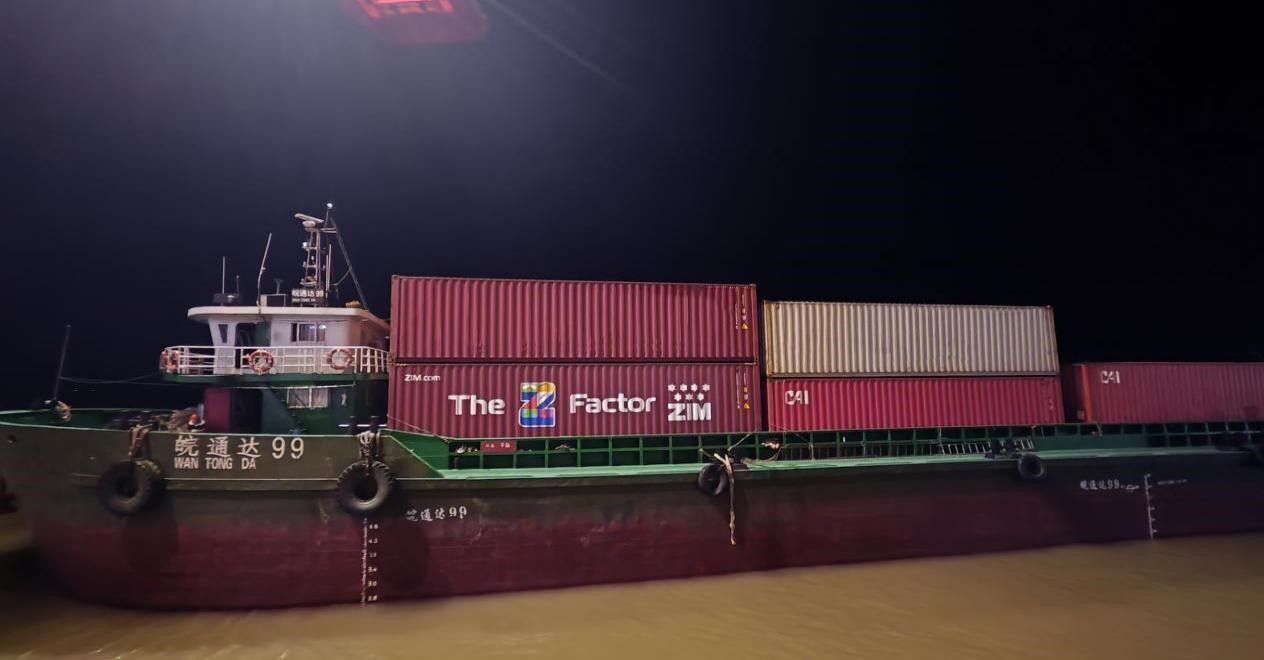In 2020, China announced that it will strive to bring its carbon emissions to a peak before 2030 and become carbon-neutral before 2060. It noted that China will further transform its energy consumption structure by promoting the wider use of clean and renewable energy and build a New Energy-dominated Power System, as PV power playing an increasingly important role in the energy supply system.
As a major photovoltaic manufacturer, LONGi strives to improve the efficiency of electricity to facilitate the energy transition of China, while exploring its own green low-carbon development path. Green logistics is an important part , as the upstream and downstream logistics account for 3.36% of LONGi's entire value chain emissions, or the carbon footprint of photovoltaic module products.
For proper use of logistics resources and for carbon saving and emission reduction in logistics activities, LONGi logistics engineering team schemed its global logistics network, with well deployed global warehouses, and cost-effective transportation lines. A proper, economical, and green logistics pattern with points, lines, and planes came into being. The warehouses are seated in favorable locations, so as to shorten the distance for transportation and maximize benefits of the system, thus reduce the carbon emissions of the entire logistics chain.
In 2020, LONGi logistics engineering team designed and put into practice a new green transport mode—intermodal transport. With river-sea, rail-sea intermodal transport, and lump-sum freight, the inland trailer transport was replaced with the new inland water/rail transport to not only cut logistics costs, but also to practice green logistics and reduce carbon emissions by using greener and lower carbon means of transport.
At the first beginning, intermodal transport for export only accounts for about 10% of LONGi export business. With the deepening of green logistics, the number has ballooned into 86%, meaning 86% of LONGi's export business is greener and lower carbon transport model.
On basis of the success, LONGi Logistics engineering team aspires to build an end-to-end green logistics throughout the process, trying out the intermodal transport on customer delivery section in Europe in 2024. The team designed green rail/water transport routes from all European base ports/warehouses to customer locations, and made a great success. A green low-carbon logistics model across the entire transportation chains begins to take shape.
For example, for modules exported from LONGi Wuhu factory to Italy, before export, compared to traditional land transport which is 380km far from Shanghai port, it is only 30km to the nearest river port Zhujiaqiao wharf by drayage, and board an inland barge to Shanghai port. Then modules are transported to Antwerp port in Europe by sea. From Antwerp, modules are shipped to the Padua railway station at Northern Italy by rail, then arrive at customer’s project site by drayage finally to a 40km drayage to the customer's project site, which replaced traditional land transportation by intermodal transport and reduced carbon emissions by up to 64%, making whole process greener.
In addition to green transportation, LONGi renovated its packaging to go green. In 2022, LONGi logistics engineering team drew on the experience of automotive, electronics and other industries, and tried to design and apply recycling packaging for photovoltaic raw materials in the upstream and downstream of the industrial chain. For its transportation of wafers, cells, and modules, recycling packages have replaced disposable cartons to fulfill green packaging and reduce carbon emission, a step forward to recycling economy.
It is calculated that, by using recycling packaging across the upstream and downstream of the industrial chain, LONGi would cut 23 million yuan costs, save 2.3 million cartons, and reduce carbon emissions by 1913 tons each year.
A module practices its green low-carbon commitment in such ways: using green recycling packages across the upstream and downstream of production, assembling in a green lighthouse factory (LONGi Solar Jiaxing recognized by WEF as Global Lighthouse Factory, the first one ever in solar industry. See the WEF coverage: https://initiatives.weforum.org/global-lighthouse-network/case-study-details/longi-solar---jiaxing), and delivering to customer sites through green transportation.
Photovoltaic is an important engine to drive energy transition and develop emerging industries. Green and low-carbon development for Photovoltaic enterprises is an urgent need for green photovoltaics. LONGi will further deepen and explore its green and low-carbon development, extending the logistics success to green factories, green supply chain, and green industrial chain.

About LONGi
Founded in 2000, LONGi is committed to being the world’s leading solar technology company, focusing on customer-driven value creation for full scenario energy transformation.
Under its mission of 'making the best of solar energy to build a green world', LONGi has dedicated itself to technology innovation and established five business sectors, covering mono silicon wafers cells and modules, commercial & industrial distributed solar solutions, green energy solutions and hydrogen equipment. The company has honed its capabilities to provide green energy and has more recently, also embraced green hydrogen products and solutions to support global zero carbon development. www.longi.com